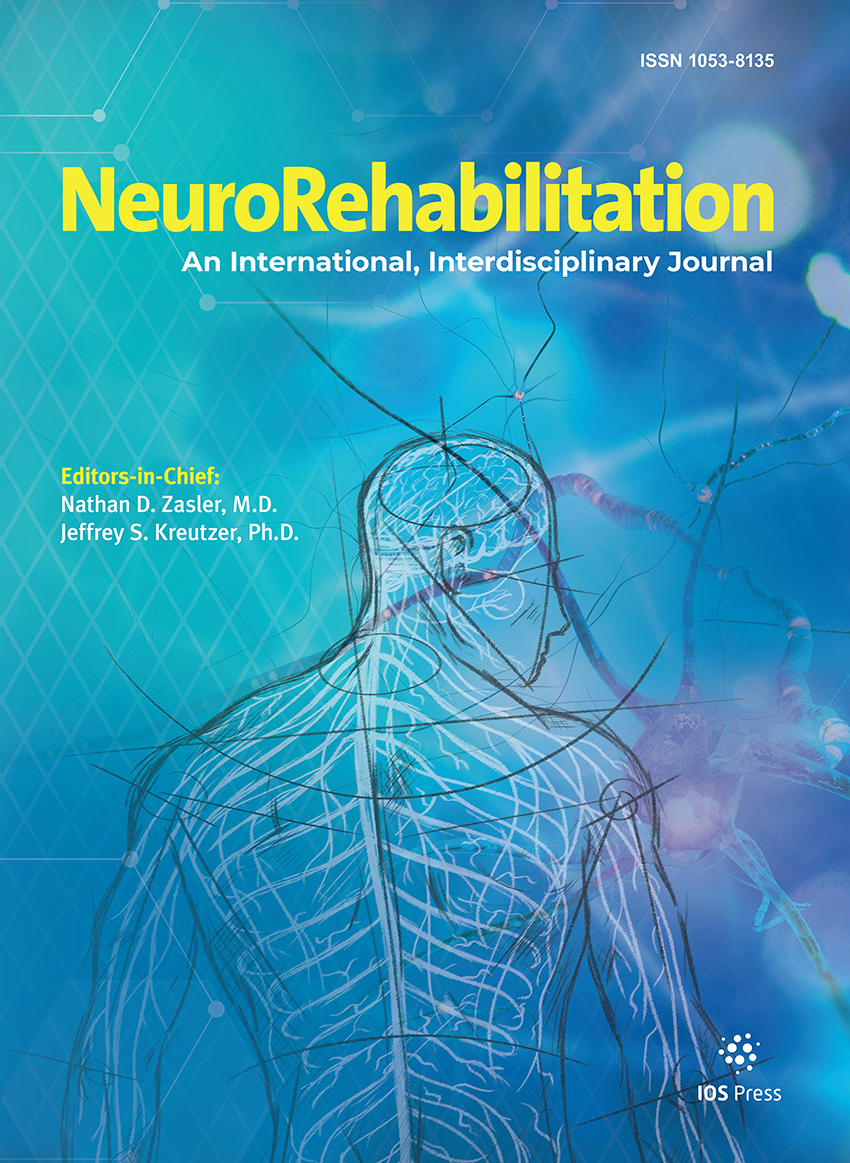Authors: Vargas, Gary O. | Neaves, Stephanie | Pham, Tri | Huang, Mu | Turki, Ahmad Fawzi | Wang, Chaowei | Bell, Kathleen R. | Juengst, Shannon B. | Zhang, Rong | Li, Ming | Driver, Simon | Behbehani, Khosrow | Hynan, Linda S. | Ding, Kan
Article Type:
Research Article
Abstract:
BACKGROUND: Individuals with moderate to severe traumatic brain injury (msTBI) have reported a lack of motivation, lack of time, and fatigue as perceived barriers to exercise. OBJECTIVE: To evaluate the effects of an exercise program on self-reported health-related symptoms and quality of life in persons 45-years and older with msTBI. METHODS: Post-hoc analysis of a prospective community-based 12-week exercise program of 20 adults, age 45–80 years, with msTBI. Ten were in aerobic exercise training (AET) program and 10 in a stretching and toning (SAT) program. The AET group was instructed to exercise based on
…their estimated maximal heart rate (HR) for 150 minutes weekly. The SAT group was to stretch for the same target time without significantly increasing HR or level of exertion. Outcome measures were Traumatic Brain Injury Quality of Life (TBI-QOL) for global, cognitive, emotional, and social health, Patient Health Questionnaire-9 (PHQ-9) for depressive symptoms, and Pittsburgh Sleep Quality Index (PSQI) for sleep quality. RESULTS: AET was associated with improved self-reported cognitive health and sleep compared to SAT. Moderate to large, positive effect sizes were also observed in the AET group in the QOL categories of global, emotional, and social health, and depressive symptoms. CONCLUSIONS: This study offers preliminary evidence that AET may improve health-related QOL, especially for cognition and sleep, in middle-aged and older adults with msTBI.
Show more
Keywords: Traumatic brain injury, exercise, quality of life, sleep, cognition
DOI: 10.3233/NRE-230223
Citation: NeuroRehabilitation,
vol. Pre-press, no. Pre-press, pp. 1-9, 2024
Price: EUR 27.50





